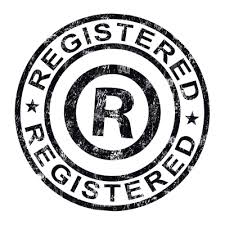If you’re like most business people you’ve probably found yourself unsure about when and how often to use service mark and trademark symbols in business writing. Here are some simple pointers.
Using the Right Trademark Symbols
The three symbols are ™ (trademark, for products), ℠ (service mark, for services), and ® (registered trademark). The symbols ®, ™ and ℠ provide notice to the world, and your competitors, that you claim trademark rights in the mark or name using these symbols. The ™ and ℠ symbols can be used without a federal or state registration of the mark or name. The ® symbol, however, can only be used only after the USPTO officially registers your mark after your trademark application is successfully presented (it cannot be used while the application is pending). Its use puts the public on notice that the mark is registered and carries nationwide rights.
The advantage of the notice provided by the symbols is that it enables others to respect (and not infringe) your intellectual property, deters them from attempting to use the name or mark for their own business, and prevents confusion in the marketplace about the identity of a product or service. Also, for registered trademarks (®) use of the symbol is often a prerequisite to recovering damages for infringement. Your use of the symbol is evidence of your notice, and enables you to prove an infringer had actual notice of your trademark rights.
Placement of Trademark Symbols
Trademark symbols are placed immediately at the upper right of the logo, name or mark, as a superscript, in the same font as the mark, without a space. This placement is not a requirement, but accepted usage and a standard business practice—and adherence to these norms serves your notice objective by allowing readers to see what is familiar. In some aesthetic instances the symbol is placed in the lower right-hand corner of the mark. But placement is not appropriate above, below or to the left of the mark. Also, trademark symbols appear before final punctuation (e.g., “We have installed 100 Safe-T-sensors™.” Or, “How many fires are prevented annually by the Safe-T-element®?”).
Use of Trademark Symbols—Sufficient Notice
What’s key is to “sufficiently,” “clearly,” or “conspicuously” put the reader on notice of the asserted or claimed right in the name or mark. When using your trademark, place it prominently, so readers notice it and the adjoining symbol immediately. This only requires using the symbol in the first primary or key use of the mark in the document’s text or headings. Sometimes it’s appropriate to place the symbol as part of a logo or headers on the page and accompanying use of the name in the text. From that point on, the reader is on notice—and the writer has done what is required to ensure notice of, and no confusion over, the status of the mark or the claimed IP interest.
Since a single or a couple of prominent (conspicuous) placements of the mark and symbol in a document suffice to cover your legal interests, why make readers work hard or be annoyed by overuse of these symbols?
Frequency
Accepted practice doesn’t require you to “repeatedly” convey notice—just “sufficiently.” It’s nonetheless common for businesses to use the ™ and ℠ and ® symbols in the body of text material every time the mark or name is used. Lots of business people are confused or under a misconception on this point. I often see business copy in which mark symbols appear dozens of times on one page.
It’s unnecessary overkill. But uncertainty leads writers to do it anyway “just in case.” Many writers think or are afraid they must use these symbols every time they use the name or mark in text. They fear that if they don’t use the symbol in every instance some slickster will maneuver around their intellectual property claim. Relax, it doesn’t work that way.
Using trademark symbols in every instance is visual clutter, a distraction for readers. It’s unnecessary to protect intellectual property. It also diminishes the document’s visual appeal and makes the writer, and the company, look—I hate to say it—amateurish or uninformed. No offense, but if you’re guilty of doing this, readers are rolling their eyes, and you’re setting a bad example for the rest.
Proper usage: don’t use the mark symbol repeatedly every time the name or mark is used in a document. Just use it conspicuously, prominently and sufficiently—usually when the mark first appears, or in its most prominent appearance.
References and Additional Reading:
Trademark Manual of Examining Procedure (TMEP) – 6th Edition
The U.S. Patent and Trademark Office’s (USPTO) trademark manual.
See Chapter 900 “Use in Commerce,” in particular.
International Trademark Association
Offers a source for answers to common questions on trademarks and using trademarks.
Shadesbreath, Using Trademark Symbols in Writing: Answering Questions on Use of Trademark and Registered Trademark Symbols in Writing, Hubpages, Jan.14,2012.
